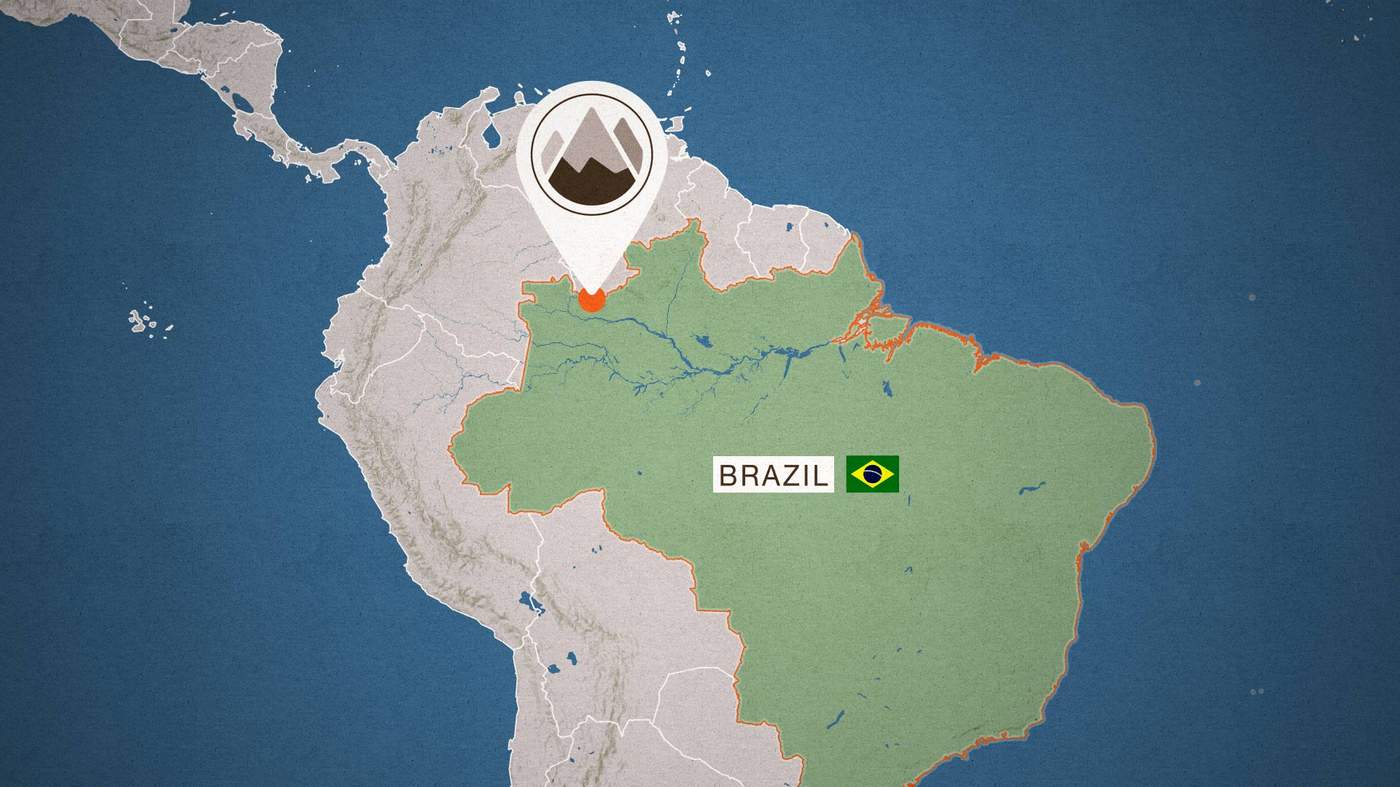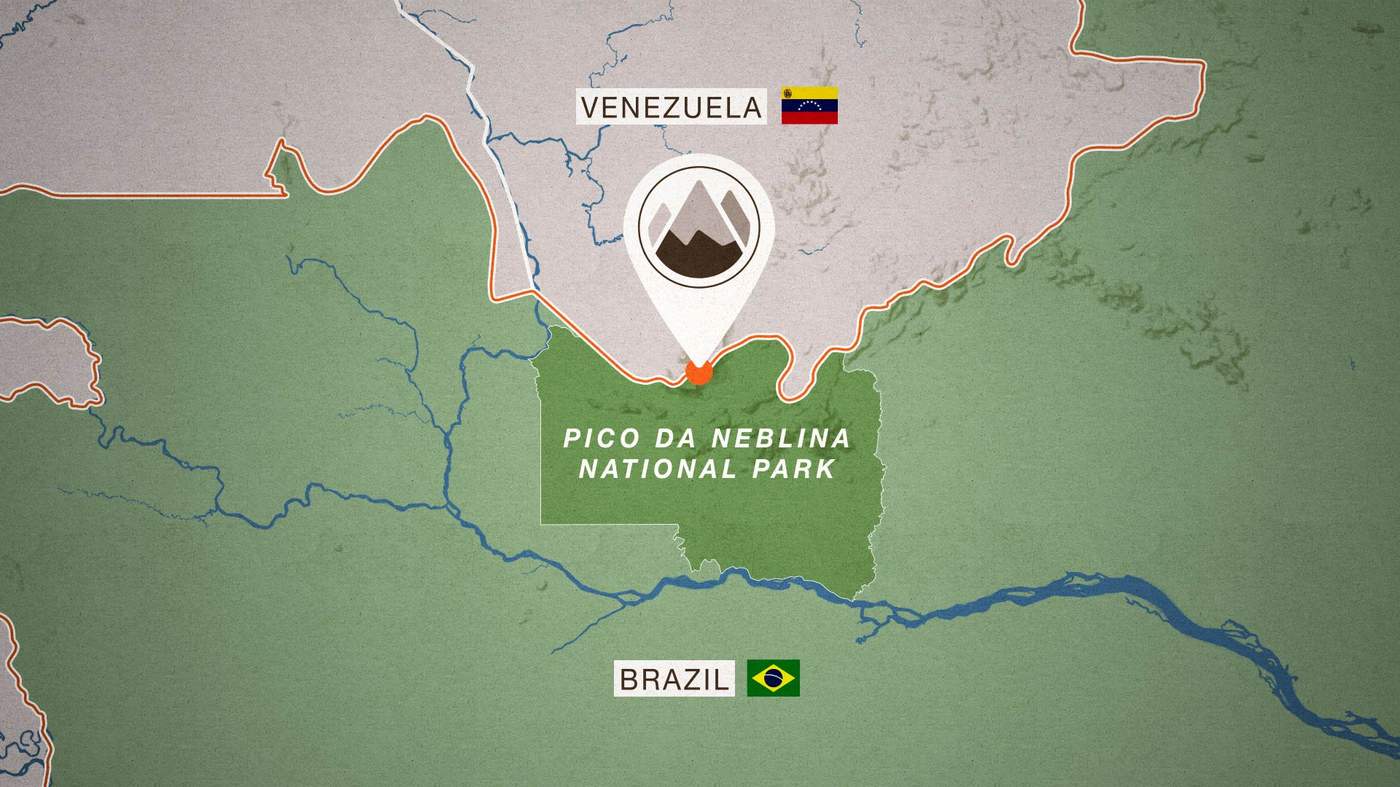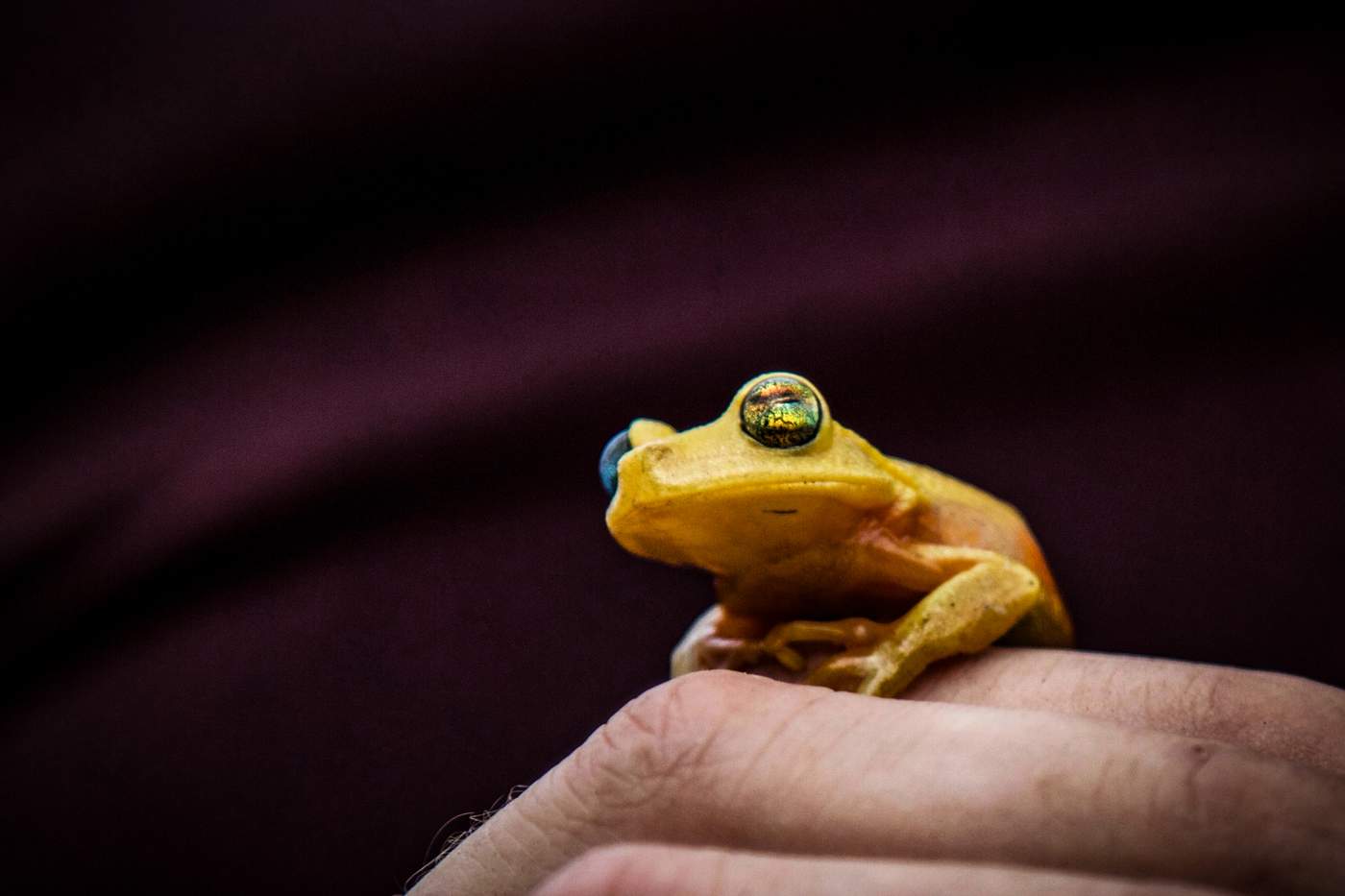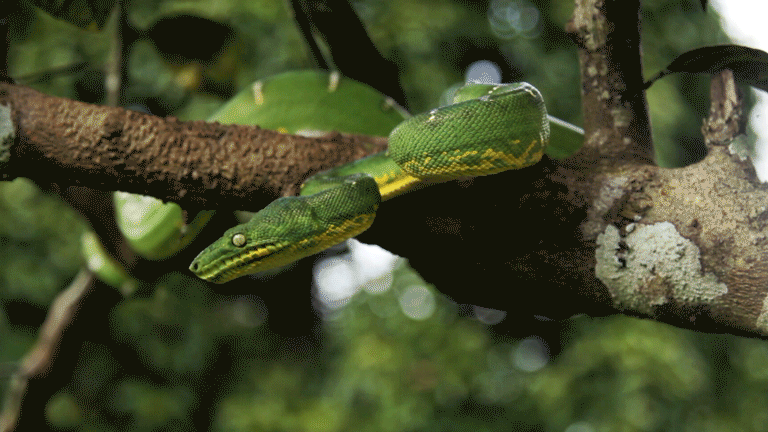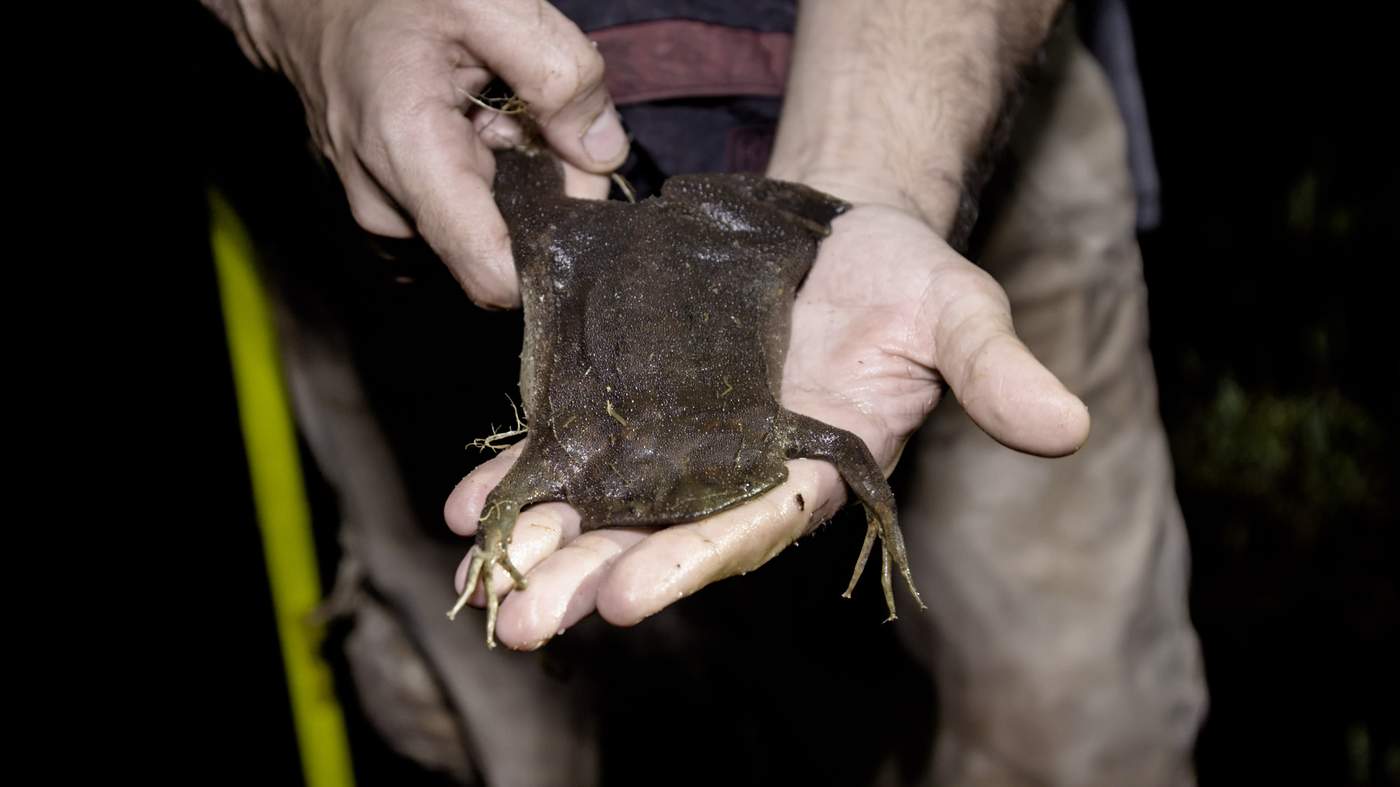Almost perpetually shrouded in clouds, Brazil’s highest mountain Pico da Neblina meaning 'peak of mist', towers 2,995m above the Amazon rainforest.
Stretching into dense jungle, the National Park has been closed to visitors since 2003 as a result of failed tourism and mining activities which infringed on the rights of the indigenous Yanomami people.

Yanomami elders during a ritual in the Pico da Neblina Park
In November 2017, a team of leading Brazilian scientists were granted rare access by indigenous authorities and the army to embark on an expedition to the region.
Ground troops and local guides from the Yanomami ethnic group assisted the scientists’ one-month journey to and around the mountain.
THE NINE NEW SPECIES
As the process of naming a new species can take years, the team has provided the following nicknames for their discoveries...
1. The Big-eyed Red
The 'Big-eyed Red' was discovered after the team hiked seven hours from their camp to the summit of the Pico da Neblina.
This is literally Brazil’s highest frog.”

Ivan Prates gets ready to board an army flight to the mountain
"My team mate Agustin found the first of these little guys on our way to the highest peak, sitting under a rock," says Ivan Prates, a researcher from Smithsonian's National Museum of Natural History. After finding the first, the biologists began flipping other small rocks, finding ten of the species all the way up to the summit’s highest rock.
2. The Chubby Grey
"I found it within the first couple of hours after we arrived at the mountain campsite. It was inside the big tent, where we’d later sleep," explains Prates. "I was carrying a box, helping to set up the tent, when I saw something hopping on the grass. Throwing everything I was carrying to one side, I jumped on it right away - the way we do when we see anything moving!"
When I looked at it in my hand I couldn’t help but say ‘what on Earth is this frog?’”
'The Chubby Grey' is part of the very large Terrarana family which groups together about a thousand species. "That’s all we know," says Prates. "It’s more or less like saying 'this is a type of bug' when you find an insect. So for a biologist, it doesn’t say much at all." The team is generating DNA data to better place the species in the frog family tree.
3. The Lizard-walking Toad
Evolutionary biologist Agustin Camacho spotted the first of this new species at night, 2,000m up the Pico da Neblina. It was sleeping on a small leaf. "We all went nuts when he showed us because we knew what it meant," says Prates.
It doesn't hop like other toads. It walks in a lizard-like fashion. It's full of warts and really weird!”
The tiny toad, measuring 35mm, belongs to a group that's restricted to tabletop mountains. Its closest relatives are known to exist in Venezuela, other parts of northern Brazil, and Guyana. "This distribution suggests these distant mountains were connected in the past," says Prates. "Some scientists think a massive plateau existed in this region but because it was severely eroded, all that remained are these isolated mountains."
4. The Neblina Pygmy owl
Professor Luis Fabio Silveira, an ornithologist at the University of Sao Paulo, spotted this new type of Pygmy owl singing alone 1.5m up a small tree on Pico da Neblina. He says it was an unexpected find because its close relatives usually dwell in the canopy of much larger trees.

Luis Fabio Silveira's been involved in the discovery of 14 new bird species
When I heard its very distinct voice, I immediately realised I was listening to a completely new song - the best indication of a new species!”
Little has been established about its habitat and biology. "After a brief moment of excitement I had to work quickly to get an excellent record of the voice and then try to collect the bird," says Silveira.
5. The Night Sky
Discovered on the Pico da Neblina, Prates describes this 6cm-lizard as having "the coolest belly and sides, with black and white spots which make it look like the stars at night. We went crazy when we checked our pitfall [bucket] trap and saw it because we knew what it meant."
These lizards are windows to the past in this region.”
Its closest-known relatives within the Riolama group only live on mountains in this part of South America. Prates says the discovery helps embolden a theory that an extensive plateau existed up until 10 million years ago.
6. The Brown Giant
Double the size of 'The Night Sky' lizard, 'The Brown Giant' - also part of the Riolama family - was also found on the mountain, but this time in the scientists' makeshift kitchen by an army cook.
The tail broke off when I was trying to collect it in the kitchen. That always feels terrible.”
Lizards are largely known to break off their tails as a defence mechanism against predators like birds that latch onto their tail.
7. Neblina Phyllanthus
Professor Renato de Mello-Silva discovered this shrub on the Pico da Neblina. It's 2m high and abundant in small leaves.
I've never seen such contrasting and exquisite foliage colours!”
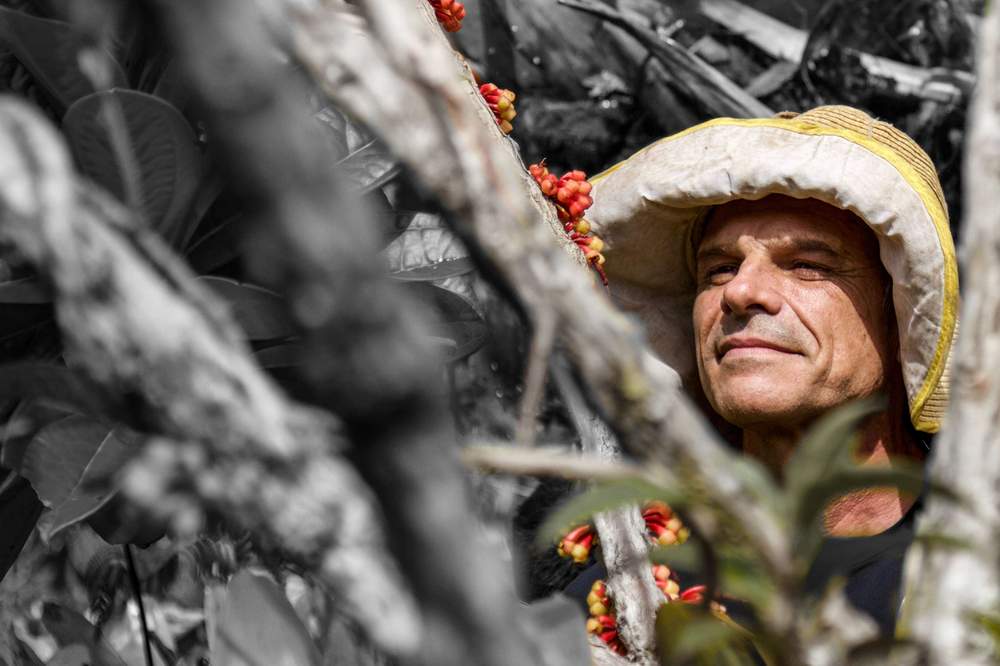
Renato de Mello-Silva examines what could be another new species
Mello-Silva says the plant's 'dirty, deep-green leaves' stand out from the mountain's forest which is largely made up of 'young, clean, light-green leaves'.
8. The Chirping Frog
"We found this one in the lowland forests around the Pico da Neblina foothills in dense, hot-humid jungle," says Prates. This frog belongs to the Allobates group that's only active during the day.
When it calls, most people don’t realise a frog is making the noise. It sounds like a bird!”
The tiny 'Chirping Frog' is set apart from its close relatives by a distinctly odd colouration on its legs. It's a type of 'nurse frog', meaning males carry eggs on their back before releasing them onto the forest floor, rather than laying them in water. Once the eggs hatch, Prates says the tadpoles crawl "back onto dad’s back" where he then searches for "a really good puddle, away from predators, for his babies to develop".
9. The Plump Digger
"This frog is really hard to find because they burrow deep into the dark Amazonian soil among entangled roots," explains Prates. The scientists discovered this new type of Synapturanus or 'disc frog' as they’re commonly called, by placing their ears to the ground and recording its unique call.
At only 2.5cm in length, its most distinct feature is its chubby legs, wide lower-body, and pointy nose which are all believed to help it dig head-first into the forest floor. Prates and his colleagues found two 'Plump Digger' frogs in buckets they'd dug into the ground.
They come to the surface during humid nights and go for a walk. That’s how we got them.”
"When you start digging for them you never get them for some reason," says Prates. "Are they deeper than their noise suggests? Who knows."
Visiting this place is like stepping back 1,000 years.”
Professor Miguel Trefaut Rodrigues led the team of 12 scientists from the University of Sao Paulo covering reptiles, amphibians, birds, small mammals, and plants. He's considered to be South America’s leading herpetologist - a specialist in frogs, lizards, and snakes. He's also one of the most active, leading several expeditions every year in the Amazon rainforest.
Rodrigues has found at least 80 new species throughout his career and has created one of the world’s largest genetic collections of wild organisms. He describes the team’s visit to the Pico da Neblina as "one of the most important parts of the Amazon to get genetic material".
Here are some other fascinating creatures discovered previously in the Pico da Neblina National Park...
Credits
Author, photographer, illustrator, online producer:
Elaine Jung
Photos of new species: University of Sao Paulo
Map graphics: Charlie Newland
Built with Shorthand
All images subject to copyright

